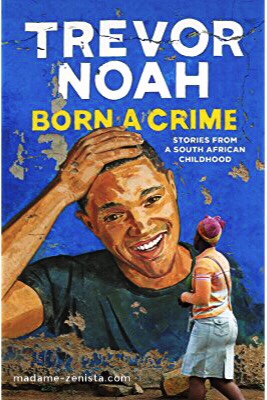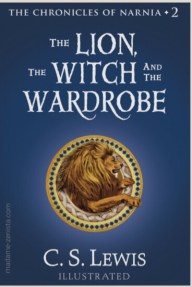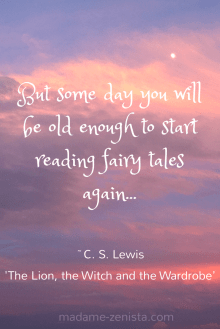
Introduction: Considering I found Lean In quite relevant and inspiring, this might very well be a subjective review. Or not. Regardless, if you are a career woman, this book should find a respectable position in your bucket list.
The book opens up with startling statistics of the huge gender gap prevalent in the workforce, priming you for some great insights and career advice that follow. The corporate world is a male-dominated arena. Now whats wrong with that, you might ask? Well, as Melinda Gates puts it, “just having 2-3 women on a board, the boardroom conversation changes, and it does on behalf of the society“. Voices, when they come from the top rungs of the corporate world, help disrupt the status quo significantly, which is why, I think, books like these are so significant in contemporary times.
7 Important takeaways:
- The internal barriers: Lets start form within: most women hold themselves back, lack the confidence and set lower expectation for themselves compared to men to aspire or to achieve, for the fear of being labeled “too aggressive” or “too outspoken” or “too ambitious”. We as women are tend to ‘internalize’ these negative messages and take it to heart. It is important to first get past these and then go reach out for more! Also, most women suffer from what is called as the impostor syndrome.(check out iii under extras below)
- Price for success might be likability: There is a perception (like/accept it or not) that if a woman is successful / competent, she will not be nice, and the one who is nice can’t really be very competent. Sandberg suggests women work with this and recommends smiling and being nice; acting more “communal” as against individualistic is key, like using words “we” “us” “our team” instead of I and me. Women rarely negotiate salaries, for the same reason. (There is a great video at ii under Extras below on how to negotiate).
- Success is not a ladder but a jungle gym: Ladders are limiting with only one way to get to the top. Jungle gyms (the kids play structure with ropes, nets, climbing walls) offer more creative exploration with many ways to get to the top. Career is not like a ladder but like a jungle gym; there is not one destination, but several vantage points that your career can take you to. There is no perfect fit when you’re looking for the next big thing to do. You have to take opportunities and make an opportunity fit for you, rather than the other way around. The ability to learn is the most important quality a leader can have (I thought this to be the most valuable advice!).
- Finding Mentors: Don’t keep looking for someone who you can make your mentor. Keep doing what you got to do while asking for help and suggestions from people along the way. A mentor will just come along, rather than the other way round. (In fact, this book could be your mentor, in print, so don’t pass up!)
- Don’t leave before you leave: When it comes to having kids and family, don’t over-plan years ahead of time and hamper your present chances of success. Plan for it, of course, but cross the bridge when you come to it.
- Lean In: Make your life partner a real partner so that you share responsibilities at home equally. ‘Lean in’, don’t lean back! I think it is about working towards changing the cultural conditioning we grew up with about what men and women “should and should not do” that needs revamping, to start with.
- Goal-setting: Have concurrent goals, long-term (say 5 years) and short term (18 months). Your long-term goal could be something like ‘wanting to work in a specific field’, ‘travel the world’ or even ‘have more free time’. It is OK if it seems vague or unrealistic now, what it will do is give you the direction. Your short term goal could be, say, the skills you want to master or the tasks you want to complete. While the long-term plan allows you to dream big, the short-term plan forces you to be on the timeline.
Weaved in the narrative are not only stories from Sandberg’s own life, but also her insecurities, moments of self-doubt and her continual struggle with the impostor syndrome, which makes you see her as ‘one of us’ (despite being one of the most successful career-women today). Her stories are believable, her advice, achievable. I mostly listened to the audio-book, and the narrators voice is very close to the authors, which I thought was nice. A part motivational, part self-help, part feminist manifesto overflowing with startling statistics at every turn, this book gives you that extra push to cover the gap between you and your opportunity.
Conclusion: The workforce is still run by men, the cultural stereotypes against women still run deep, and the gender bias is still very much prevalent. Until such time that we, women and men, usher in a brave new world where both genders have equal opportunities and freedom to pursue their dreams, let us use this book to get there.
Extras:
i. Global community of Lean In: https://leanin.org/
ii. Negotiation for women: https://www.youtube.com/watch?v=MXFpOWDAhvM
iii. A great TED Talk on confidence, body language and the Imposter Syndrome: https://www.youtube.com/watch?v=Ks-_Mh1QhMc
Legendary investor Warren Buffett has stated generously that one of the reasons for his great success was that he was competing with only half of the population.
“My generation fought so hard to give all of you choices. We believe in choices. But choosing to leave the workforce was not the choice we thought so many of you would make.” ~ Judith Rodin (President, Rockefeller Foundation; first woman to serve as president of an Ivy League university.
Fear is at the root of so many of the barriers that women face. Fear of not being liked. Fear of making the wrong choice. Fear of drawing negative attention. Fear of overreaching. Fear of being judged. Fear of failure. And the holy trinity of fear: the fear of being a bad mother/ wife/ daughter.


















 Intro: You know Trevor Noah, right?
Intro: You know Trevor Noah, right? 






 When I finally got around reading it amidst several projects (a family wedding, relocating to another state, getting back to work after years, to name a few), maneuvering through digital / physical library copies, whenever available, (oh, and some other books I finished during that period), I eventually
When I finally got around reading it amidst several projects (a family wedding, relocating to another state, getting back to work after years, to name a few), maneuvering through digital / physical library copies, whenever available, (oh, and some other books I finished during that period), I eventually 








